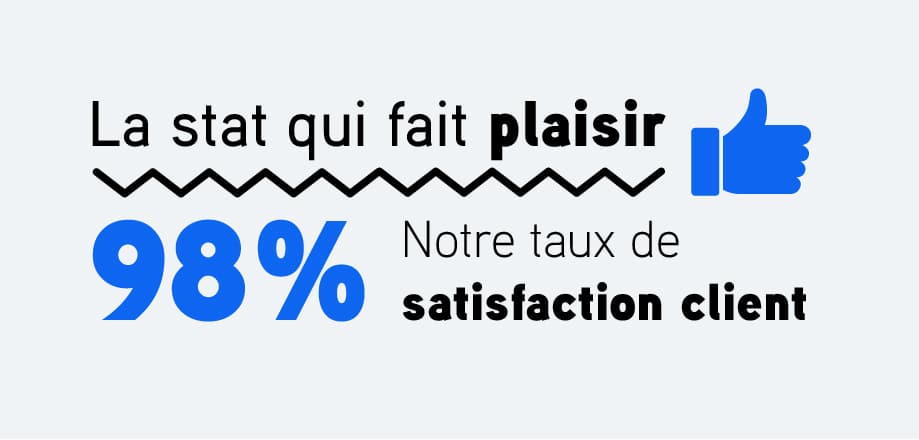Sponsored content has become a powerful tool in the publithings.com/escape-game-digital » target= »_blank » aria-label= » (opens in a new tab) » rel= »noreferrer noopener » class= »ek-link »>digital marketing landscape, offering publishers a lucrative way to monetize their platforms while providing brands with a more subtle and engaging form of advertising. Here’s an in-depth look at what sponsored content is, how it works and strategies for publishers looking to sell sponsored content effectively.
What is sponsored content and how does it work ?
Sponsored content is a type of promotional media paid for by an advertiser but created and shared by another brand, influencer, or publisher. According to HubSpot, this method is highly effective because it appears in a medium where the audience is already engaged and likely to react positively.
The process involves three key parties: the publisher, the brand, and the readers. All three must find value in the content for it to be successful. Publishers must understand their audience well and produce content that seamlessly integrates the advertisers’ messages without alienating readers.
Why collaboration with sponsored content owners is crucial ?
The collaboration between publishers and sponsored content owners is crucial for creating content that resonates with the audience while fulfilling the advertiser’s goals. This partnership ensures that the content not only fits the publisher’s style and audience expectations but also aligns with the brand’s marketing objectives, maximizing the impact and effectiveness of the campaign.
How can publishers initiate partnerships with brands for sponsored content ?
Reaching brands for sponsorships can be challenging, as data from the A.I. ad tester Ezoic suggests brands ignore 99% of partnership requests. However, publishers can increase their chances by:
- Defining their audience clearly: This helps brands easily see the value in the partnership.
- Providing detailed data and metrics: Show potential advertisers the traffic, reach, and potential impact of their investment.
- Drawing attention through dedicated pages: Having a « Become A Sponsor » or « Advertise Here » page makes it clear that you are open to partnerships.
- Using existing connections: Reach out to advertisers already engaged with your site through other means, like display ads.
- Leveraging platforms that connect publishers with brands: Services like DirectoPub can facilitate these connections efficiently.
What methods use to sell sponsored content ?
Publishing and selling sponsored content effectively involves more than just securing a partnership with a brand. Publishers must also deploy strategic methods to ensure that the content reaches and resonates with their audience. Here are some effective methods and formats that can be utilized to enhance the appeal and effectiveness of sponsored content.
Publishing and selling sponsored content : diverse content formats
Reader surveys and contests:
Engaging the audience through interactive content like surveys and contests is a brilliant strategy. This not only increases engagement but also provides valuable data to the brand about consumer preferences and behaviors. Contests, especially with prizes related to the brand, can generate excitement and encourage sharing, thus amplifying reach.
Q&A articles with brands:
These provide a platform for brands to directly address common questions or concerns that the audience might have, enhancing transparency and trust. Q&A sessions can be highly informative and offer a personal touch, allowing the brand to explain its values, mission, or the specifics of its products/services in a conversational tone.
Blog series:
A series of blog posts related to the brand or its industry can help maintain ongoing interest and engagement. This method is particularly effective for complex products or topics that require detailed exploration, allowing the audience to gain a comprehensive understanding over time.
Photos, videos or podcasts:
Multimedia content like videos and podcasts are increasingly popular and can significantly boost engagement. Videos are highly shareable and effective for demonstrating product features or brand values visually. Podcasts can delve deeper into topics, featuring interviews with brand experts or discussions on industry trends, providing value through entertainment and education.
Strategic content placement and promotion
Featuring sponsored content on the homepage:
Placing sponsored content prominently on the homepage can immediately grab the attention of visitors. This prime positioning suggests endorsement and importance, which can lead to higher engagement rates.
Sharing on social media:
Social media platforms are key for viral sharing and reaching a broader audience. Publishers should leverage all appropriate social media channels to promote sponsored content, tailored to the nuances of each platform. For instance, Instagram is ideal for visually appealing posts, while Twitter is great for quick, impactful messages and links.
Newsletters:
Including sponsored content in regular newsletters can direct your most engaged users to the content. Since newsletter subscribers have already shown interest in your content, they are more likely to engage positively with sponsored posts, especially when these are relevant and thoughtfully integrated.
SEO optimization:
Ensuring that sponsored content is optimized for search engines can draw in organic traffic long after the content is initially published. Use relevant keywords, meta descriptions, and tags to improve visibility on search engine results pages (SERPs).
By combining these diverse formats and strategic methods, publishers can create sponsored content that not only aligns with their editorial standards but also resonates with their audience and meets the marketing goals of the sponsoring brand. This approach not only enhances the immediate effectiveness of the sponsored content but also builds a foundation for successful long-term partnerships.
The advantages and the disadvantages of publishing and selling sponsored content
Sponsored content has grown into a preferred advertising strategy for brands and a lucrative opportunity for publishers. However, it also presents certain challenges that need careful management. Below we explore the advantages and disadvantages in greater detail.
Advantages
Increased Revenue:
One of the most compelling reasons for publishers to embrace sponsored content is the significant potential for increased revenue. Advertisers are often willing to pay premium prices for content that aligns well with a publisher’s audience, providing a more stable and predictable stream of income compared to traditional advertising models like pay-per-click or banner ads.
Audience Engagement:
Unlike traditional ads, which can be intrusive and disrupt the user experience, sponsored content is designed to blend in with the publisher’s regular content. This seamless integration, when done correctly, can engage readers without making them feel bombarded by ads. High-quality sponsored content provides value to the audience, either through entertainment, information, or both, engaging them as effectively as organic content might.
Brand relationships:
Developing sponsored content creates opportunities for publishers to build ongoing relationships with brands. These relationships can lead to long-term contracts, repeat business, and increased credibility within the industry. Moreover, a strong partnership with reputable brands can enhance a publisher’s own brand by association.
Enhanced content variety:
Incorporating sponsored content allows publishers to diversify the types of content they offer. This can lead to richer and more varied editorial material that caters to different segments of the audience.
By integrating sponsored content that varies in format—from articles and videos to infographics and interactive polls—publishers can enrich their content landscape, providing fresh perspectives and keeping the audience engaged. This variety not only enhances the user experience but also encourages regular visits to the site, as there is always something new and interesting to consume.
Publishing and selling sponsored content : the disadvantages
Reader trust:
The cornerstone of any successful publication is trust from its readers. If sponsored content is not clearly marked as such, or if it strays too far from what the audience expects in terms of relevance and quality, it can damage this trust. Once lost, trust can be extremely difficult to regain, potentially eroding audience loyalty and engagement over time.
Creative control:
While sponsored content is lucrative, it also requires publishers to balance the advertiser’s demands with their editorial standards. There is a delicate line between creating content that satisfies the advertiser’s marketing goals and maintaining the publication’s voice and integrity. This balancing act can sometimes lead to conflicts or compromises that may not sit well with either the publication’s team or its audience.
Market saturation:
As the popularity of sponsored content grows, so does the number of publishers offering it. This saturation can dilute the effectiveness of sponsored campaigns, making it harder for individual publishers to stand out. Both brands and audiences are becoming more discerning, which can put pressure on publishers to create increasingly innovative or unique content to capture attention and compete effectively.
Regulatory and ethical concerns:
Navigating the regulatory landscape can also present a challenge when publishing and selling sponsored content. There are stringent guidelines and laws, such as those enforced by the Federal Trade Commission in the United States, which mandate clear disclosure of sponsored content to maintain transparency with the audience. Failure to comply with these regulations can lead to legal repercussions and fines, undermining the publisher’s credibility and trustworthiness.
Additionally, there can be ethical concerns when the content closely aligns with or promotes sensitive topics, potentially leading to backlash from the audience or interest groups who may view the content as manipulative or biased. This necessitates a careful ethical consideration and adherence to both legal standards and moral practices to ensure that the content maintains integrity and respects the audience’s trust.






